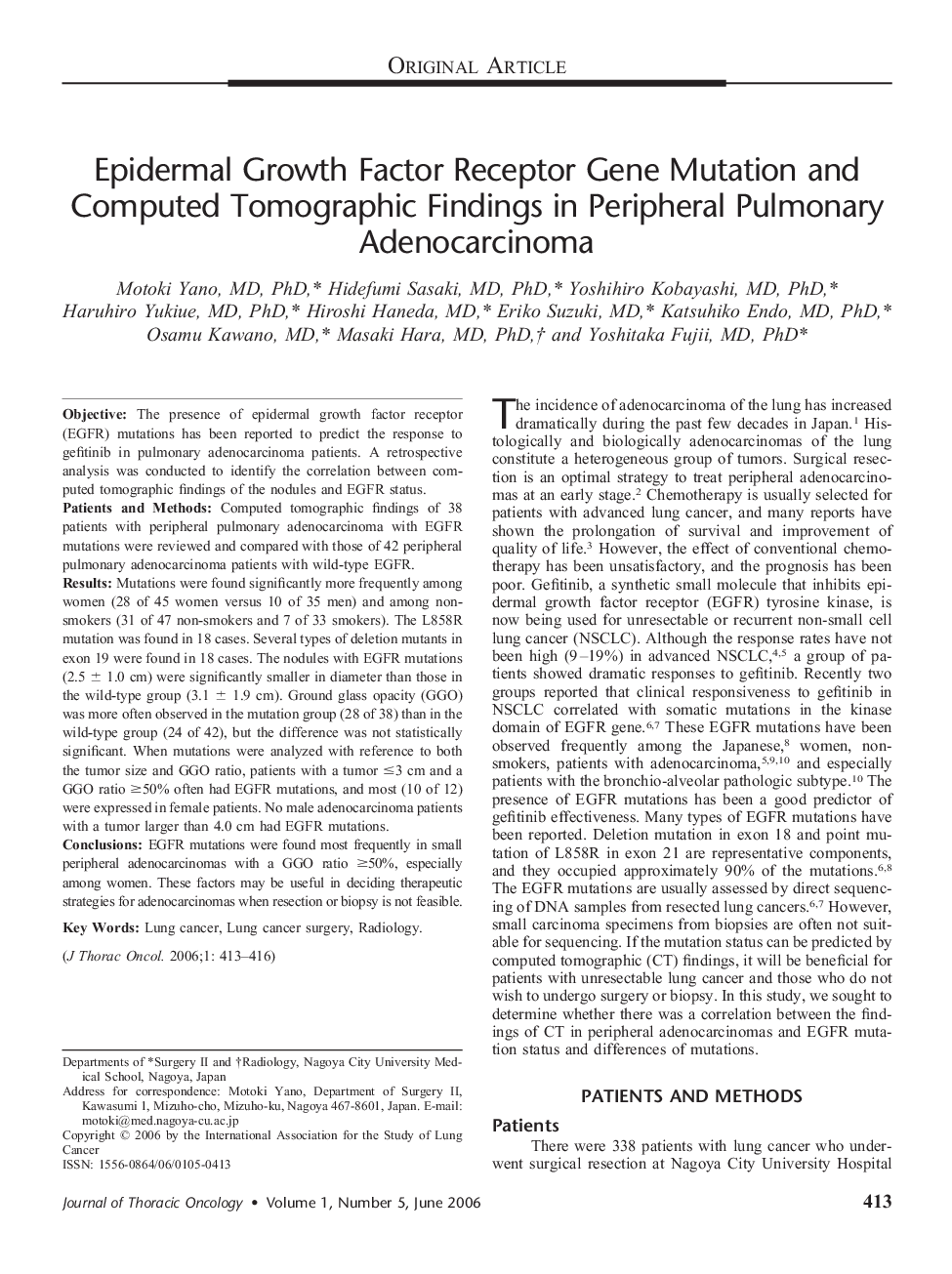| کد مقاله | کد نشریه | سال انتشار | مقاله انگلیسی | نسخه تمام متن |
|---|---|---|---|---|
| 3992922 | 1258830 | 2006 | 4 صفحه PDF | دانلود رایگان |

ObjectiveThe presence of epidermal growth factor receptor (EGFR) mutations has been reported to predict the response to gefitinib in pulmonary adenocarcinoma patients. A retrospective analysis was conducted to identify the correlation between computed tomographic findings of the nodules and EGFR status.Patients and MethodsComputed tomographic findings of 38 patients with peripheral pulmonary adenocarcinoma with EGFR mutations were reviewed and compared with those of 42 peripheral pulmonary adenocarcinoma patients with wild-type EGFR.ResultsMutations were found significantly more frequently among women (28 of 45 women versus 10 of 35 men) and among non-smokers (31 of 47 non-smokers and 7 of 33 smokers). The L858R mutation was found in 18 cases. Several types of deletion mutants in exon 19 were found in 18 cases. The nodules with EGFR mutations (2.5 ± 1.0 cm) were significantly smaller in diameter than those in the wild-type group (3.1 ± 1.9 cm). Ground glass opacity (GGO) was more often observed in the mutation group (28 of 38) than in the wild-type group (24 of 42), but the difference was not statistically significant. When mutations were analyzed with reference to both the tumor size and GGO ratio, patients with a tumor ≤3 cm and a GGO ratio ≥50% often had EGFR mutations, and most (10 of 12) were expressed in female patients. No male adenocarcinoma patients with a tumor larger than 4.0 cm had EGFR mutations.ConclusionsEGFR mutations were found most frequently in small peripheral adenocarcinomas with a GGO ratio ≥50%, especially among women. These factors may be useful in deciding therapeutic strategies for adenocarcinomas when resection or biopsy is not feasible.
Journal: Journal of Thoracic Oncology - Volume 1, Issue 5, June 2006, Pages 413–416